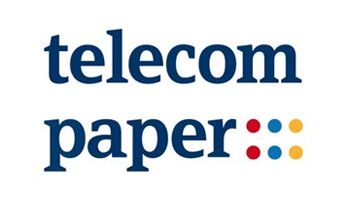Rapid Expansion of Fibre Networks in the Netherlands
The Dutch telecommunications landscape has been undergoing a remarkable transformation, with fibre-to-the-home (FTTH) deployment accelerating at an unprecedented pace. The journey began in 2004 with Reggefiber's initial rollout, which peaked around 2013. However, following KPN's acquisition of Reggefiber, deployment slowed as the incumbent operator focused on maximizing its copper network potential, limiting fibre deployment to new housing developments.
The market experienced a booming revival in 2019 when multiple players simultaneously announced ambitious fibre rollout plans. Delta Fibre, established in 2008 and shaped through private equity-driven acquisitions of regional cable operators, has steadily expanded by deploying fibre in rural areas. Now owned by EQT, the company announced an ambition to cover 2 million Dutch with fibre.
Concurrently, a partnership between T-Mobile Netherlands and Primevest and subsequently by KKR-backed Open Dutch Fibre, targeted first 1 million and then 2 million urban areas previously avoided due to complexities like multi-dwelling units and strict regulations. KPN also renewed its fibre focus, partnering with APG to form 'Glaspoort.' and expressing its ambition to cover 80% of Dutch households with its own FTTH networks, enabling it to switch off their copper network in the envisaged fibre footprint.
This competitive landscape has sparked an intense land grab, with each operator racing to claim territories. While Delta Fibre and Open Dutch Fibre avoid overbuilding existing networks, KPN and Glaspoort's more rigorous approach has led to increasing dual-fibre coverage areas. Currently, of approximately 9,3 million households, about 8 million have fibre access. With annual rollout volumes reaching 1.2 million homes passed, near-complete nationwide coverage is expected by end-2026, anticipating a further increasing share of dual-fibre areas.
Challenges and Future Prospects for Dutch Fibre Market
The fibre expansion poses significant challenges for traditional cable operator VodafoneZiggo. Despite offering gigabit speeds through its hybrid-fibre-coax network, which reaches 95% of Dutch households, VodafoneZiggo faces substantial customer outflow to fibre. The industry watches closely to see whether they will upgrade to DOCSIS 4.0 or finally transition to fibre infrastructure.
As the market matures, consolidation possibilities emerge, particularly regarding exit strategies for private equity-backed operators. Especially while Delta Fibre with approximately 1,7 million HP and Open Dutch Fibre with approximately 1,5 million HP have meanwhile reached substantial sizes. While KPN seems a natural acquirer, they're unlikely to offer premium prices, especially for overbuilt areas. VodafoneZiggo might consider acquisitions to extend their footprint or replace their coax network. A third option involves institutional investors creating open network infrastructure vehicles, provided they can secure high activation rates, e.g., by utilization commitments from ‘anchor tenants’.
However, regulatory concerns complicate consolidation prospects. The telecommunications regulator ACM's pending decision on Glaspoort's intended acquisition of 200.000 homes passed from Delta Fibre will likely set important precedents, as the regulator strongly favors infrastructure competition and expresses concerns about gradual consolidation toward KPN.
KPN has committed to completing their 80% coverage target by 2026, promising shareholders that subsequent CAPEX savings will be distributed as additional dividends. This timeline creates pressure for potential market consolidation while influencing other players' strategic decisions.
Meanwhile, operator focus is increasingly shifting from achieving homes passed numbers to increasing homes connected and activated. This shift reflects private equity firms' focus on maximizing exit values and KPN's strategy to optimize CAPEX for future dividend distribution.
Conclusion
The Dutch FTTH market exemplifies how market transparency, multiple well-funded players, regulatory oversight, and infrastructure competition can drive rapid fibre deployment. As nationwide coverage approaches, the industry faces critical decisions about consolidation, competition, and return on investment. The resolution of these challenges will likely influence fiber deployment strategies in other markets while determining the long-term structure of the Dutch telecommunications landscape.
For more insights on fiber developments in the Netherlands and across Europe, visit www.telecompaper.com or reach out to us at service@telecompaper.com.
Michael Griffioen
Senior Analyst at Telecompaper

Join us in Amsterdam
To explore these developments in greater depth and connect with industry leaders and leading technology frontrunners, don't miss the FTTH Conference 2025. Join us to gain valuable insights into the future of fibre networks, market consolidation trends, and the latest innovations shaping the telecommunications landscape. Be part of the conversation that’s driving the digital infrastructure of tomorrow.
REGISTER NOW